
A Beginner’s Guide to Chinese Calligraphy | Tools, Styles, and Tips!
By Fei Gao on Dec 18, 2023
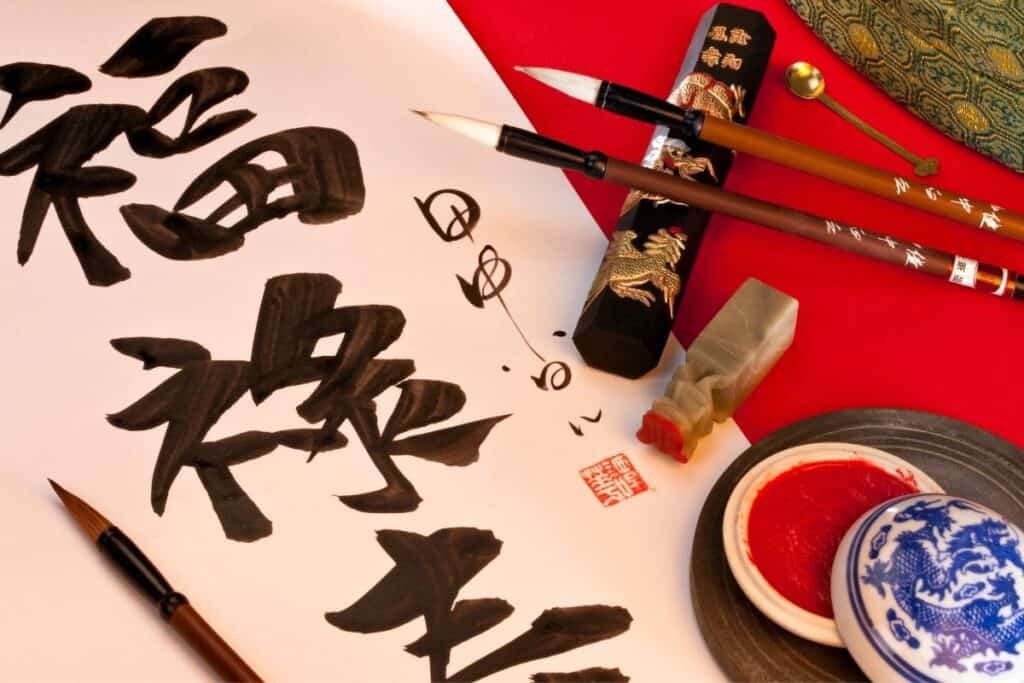
Chinese calligraphy is a beautiful art form that has been around for centuries. In this post we’ll discuss what Chinese calligraphy is, how it works, where it originated, and some of the most common writing styles.
What Is Chinese Calligraphy?
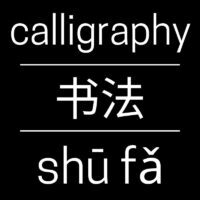
Chinese calligraphy is an art form in which writers and artists use specific brushes, ink, and water to write Chinese characters. This practice unites the fields of writing and art and has been around for over 3000 years.
The art of Chinese calligraphy involves a writing instrument or a brush. The hairs on the brush were originally made from animal hair, but today most people use synthetic brushes as they are more affordable and long-lasting.
Chinese calligraphy works by applying ink onto one of three types of surfaces:
- Paper
- Rice paper
- Silk
The ink was historically made from soot and animal glue and was then applied to the writing surface with a brush. These days, many modern water-based inks are easier and safer to use.
Why Was Chinese Calligraphy Invented?
Chinese calligraphy originated in China over 3000 years ago during the Xia Dynasty (2070-1600 BCE). The characters used to be etched into animal bones, a practice known as 甲骨文 or ‘jiǎgǔwén’.
The main reason for Calligraphy’s invention was that it allowed people to write much faster and allowed for a larger segment of the population to be able to read. There were many different Chinese dialects, and calligraphy created an easily understandable symbol set.
While most languages use different letters or symbols to form words, the characters in Chinese calligraphy are pictures based on real-life objects.
It is thought to have started as an imitation of the shapes of natural objects, such as trees and waves. This helped various Chinese communities to have a common script that was based on more universal images.
Over time, Chinese calligraphy has evolved into a more abstract style with specific rules for shaping strokes and arranging patterns on paper.
What Styles of Chinese Calligraphy Are There?
Since calligraphy is an art form that has dramatically evolved, there are many different forms and interpretations of this ancient practice. However, some styles are more popular or commonly used than others. Here are the main five types of Chinese calligraphy scripts:
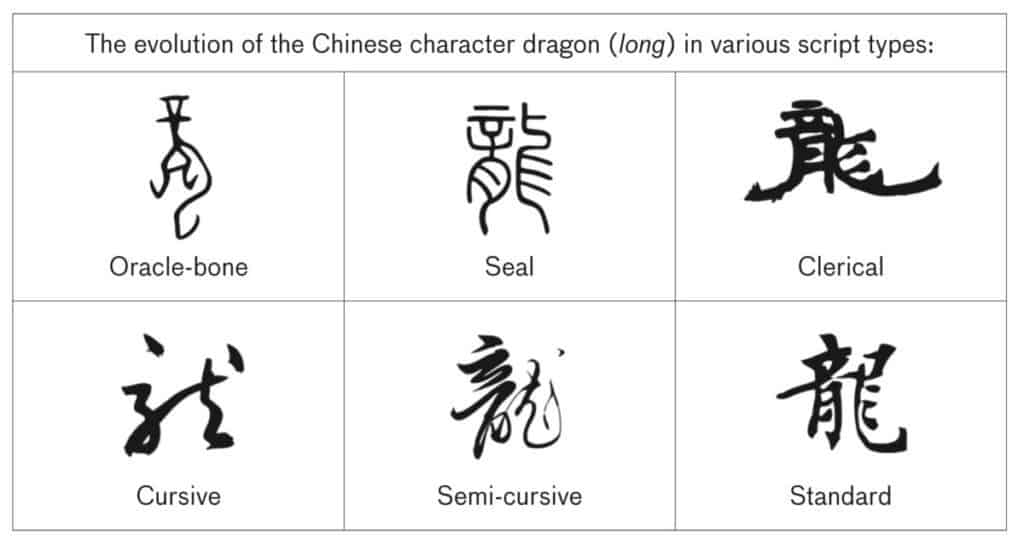
- Oracle-Bone Script – 甲骨文 (jiǎgǔwén): The oldest existing form of Chinese calligraphy. It was first used during the Shang Dynasty (1600-1100 BCE). Oracle bone scripts were written on turtle shells and ox bones.
- Clerical Script – 隶书 (lìshū): This style is still in use today, making it the longest-lasting script from ancient times to the present day. Generally, this type of calligraphy is reserved for official seals and stone inscriptions.
- Standard or Regular Script – 楷书 (kǎishū): This style of calligraphy was derived from the clerical script but has a more upright structure. It makes up the majority of traditional Chinese characters we see today in printed works and on TV and movies.
- Running Style or Semi-Cursive Script – 行书 (Xíngshū): Also known as “Xingshu”, this style is fast and easy to write. It was designed for the common writer who had no time or patience to read and write the clerical script.
- Cursive Script – 草书 (Cǎoshū): This style of calligraphy is the most informal and casual among them all. It became popular during the Han Dynasty (202 BC-220 AD) when it was used for daily correspondence between friends and family members. This writing style imitates people’s handwriting in everyday life. The strokes are typically curved or slanted, and a single character can be written in different ways.
The most common script used today is the semi-cursive script. It has been used in China for over a thousand years and was developed to be written quickly while still looking aesthetically pleasing.
There are several other styles of calligraphy that are less frequently adopted, such as seal, grass, or bird style, clerical style with archaic features, cursive official, and the modern cursive script.
What Tools Are Used to Write Chinese Calligraphy?
Calligraphy was first written using a sharp, hard object like an animal bone or bamboo chopstick to scratch characters onto the surface. These days, black ink and various types of brushes are used to create Chinese calligraphy.
A quick overview of what equipment you’ll need can be found in the video below.
Chinese Calligraphy Brush/Pen
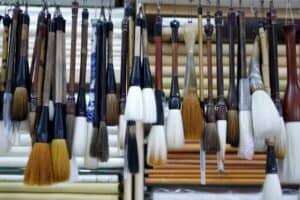
The most common writing tools used in Chinese calligraphy are brushes, specifically water-based ink brushes. Brushes can be made from animal hair or synthetic fibers; however, it is widely agreed that using a brush made from the hair of a grey wolf is considered to be best… for the brush, not for the wolf.
Chinese Calligraphy Ink
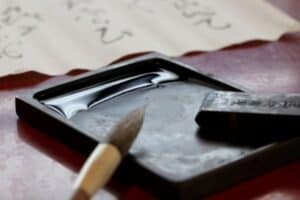
The ink used in calligraphy can vary depending on what you write, but it must always be water-based and not too thick or thin. Paintbrushes use thicker paint which will clog up the tip while thinner paints can give more detailed work as they flow more easily.
Chinese Calligraphy Paper
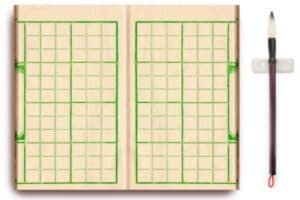
Paper or Silk Paper is the most common material used for calligraphy, but silk can also be used if you are practicing ancient-style characters. It is important to use paper that does not have a rough texture, as this will affect how smoothly your brushstroke goes across it.
Look for a paper that has a smooth surface and is not too thin or thick. You’ll also want to make sure that it has the right amount of absorbency because if it is too absorbent, the ink will bleed through.
If you are practicing writing characters on paper, then you should try using Xuan Paper or Huanzhi Paper which has a smooth surface. These two materials have been used by calligraphers for centuries and are still considered to be some of the best papers available today.
How To Get Started with Chinese Calligraphy
To get started with Chinese calligraphy, other than obtaining the tools mentioned above, take a look at the following tips in the video and in the section below.
Choose Characters you’d Like to Practice
You might want to consider a few things when it comes to writing your first few characters. Most people go with characters that are relatively simple or characters they find really beautiful. However, a good suggestion for newbies is to practice the character for ‘eternal’ or ‘forever’ which is 永 (yǒng).
The reason 永 (yǒng) is such a good character to practice is that it includes all 8 of the basic strokes in Chinese characters.
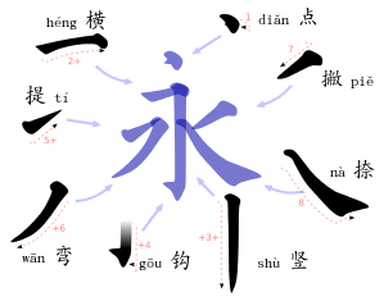
Decide Which Style of Calligraphy You’ll Try
The second step is picking out which Chinese calligraphy style suits you best: running or clerical? You may even want to try both styles before making up your mind, as this will help give you more of an appreciation for each one. After choosing and practicing on paper for a while, you can then try writing on silk.
Don’t Neglect Your Posture
You should be sat up straight with your shoulders relaxed and your feet on the floor. Remember that the thickness of the stroke in Chinese calligraphy is very important, so if your posture is poor and your centre of gravity is all ‘skewiff’, it’s definitely going to affect your work… and your back!
Practice, Practice, and Practice Some More!
Once you have chosen your favorite character to practice with and found the style that suits you best, it is time to start practicing!
As with most skills, mastery comes through regular practice. Try using only one brushstroke per day until it feels comfortable enough to move on to another one. Then, move on to different and increasingly complex characters.
